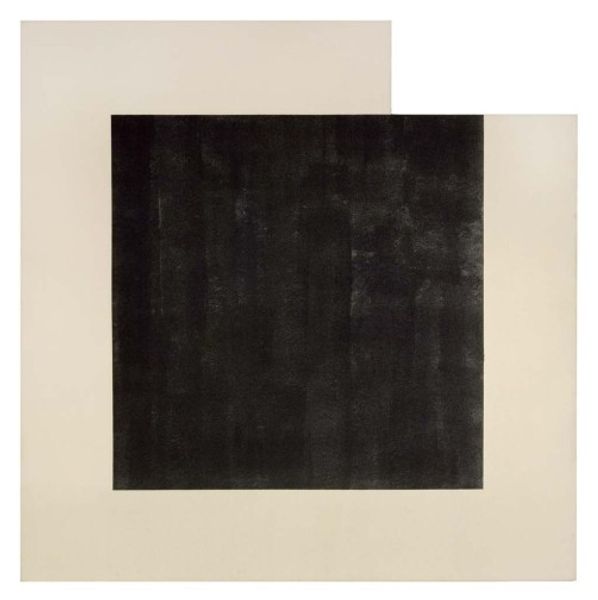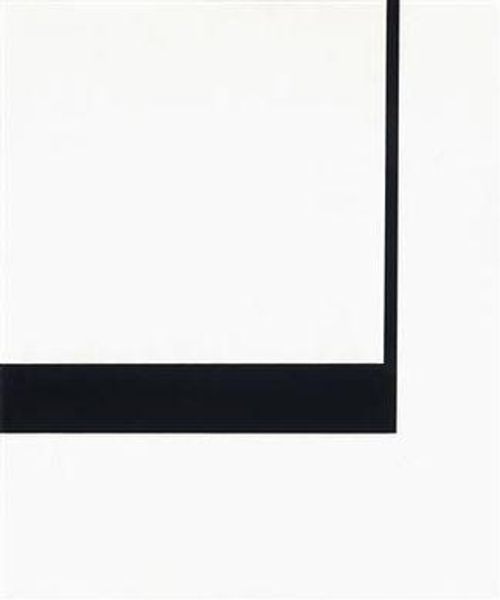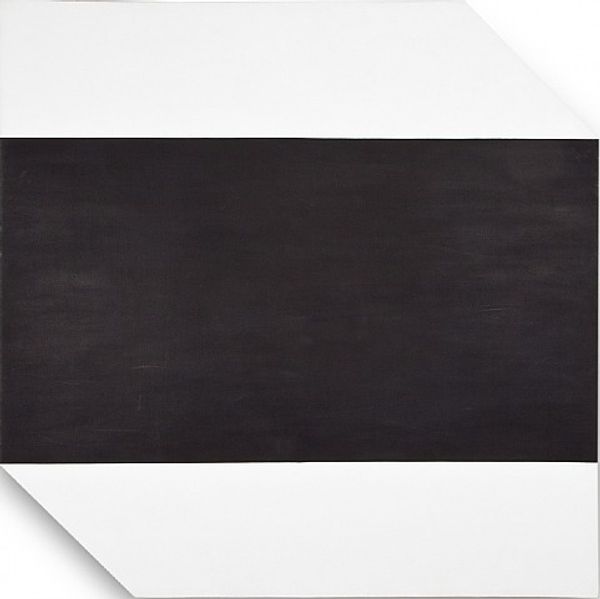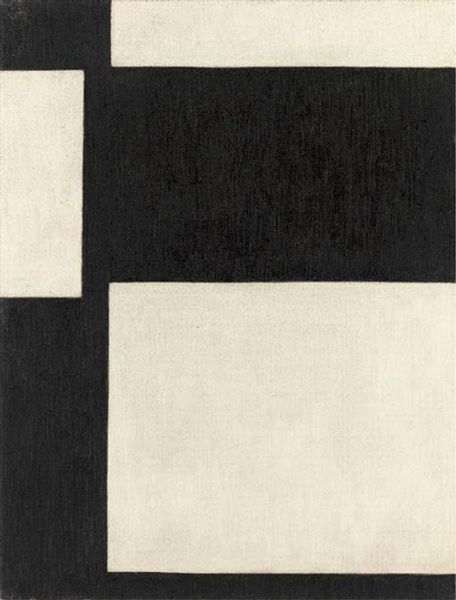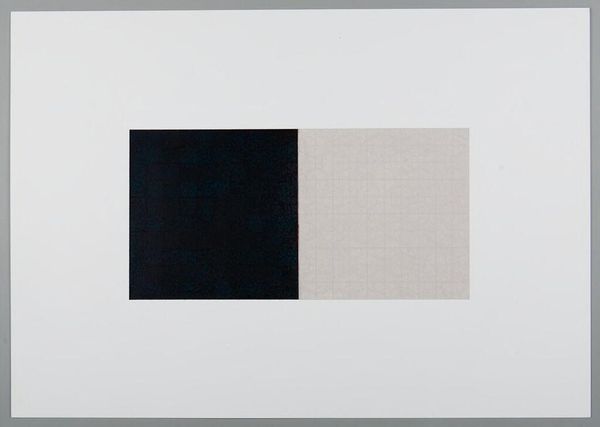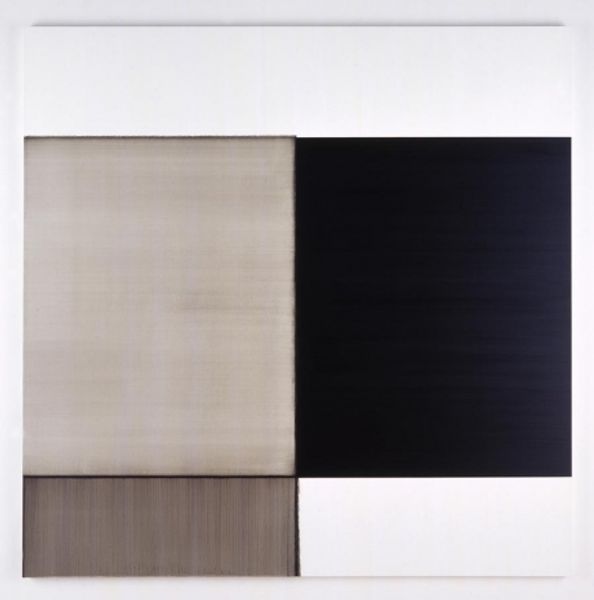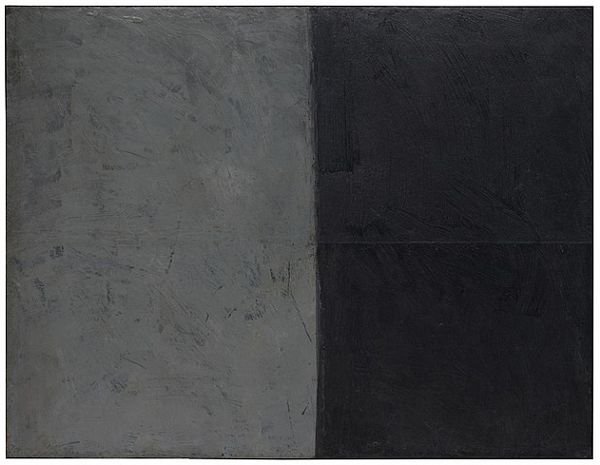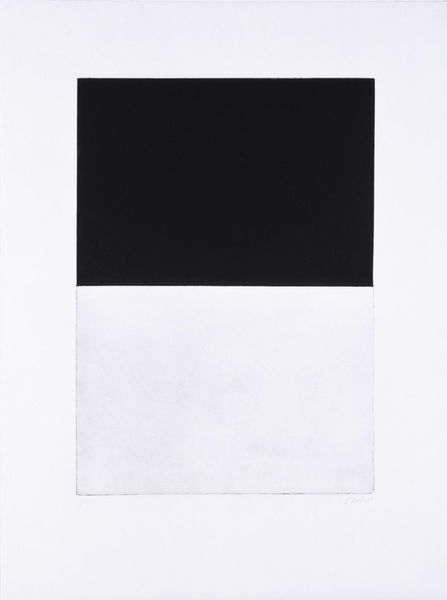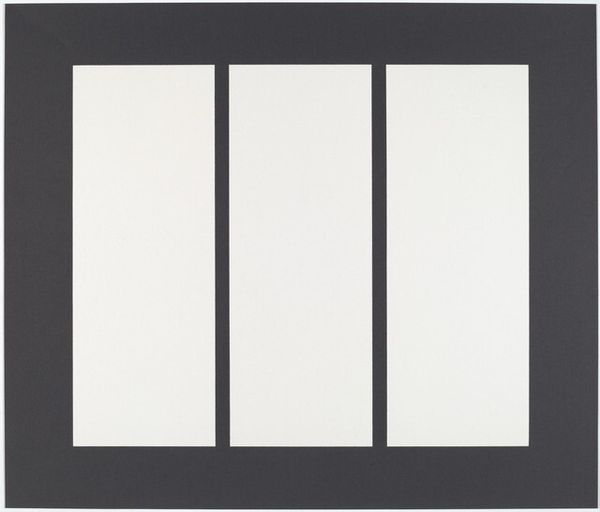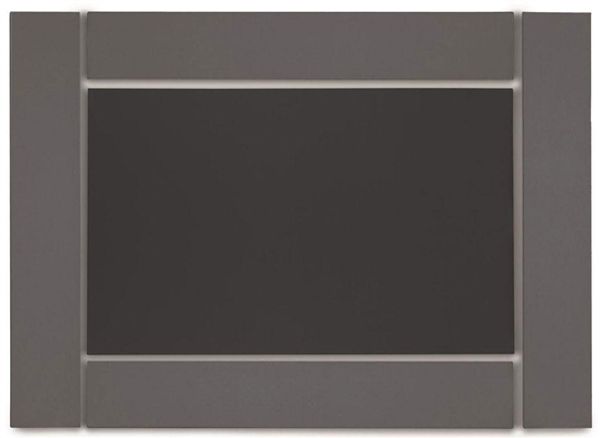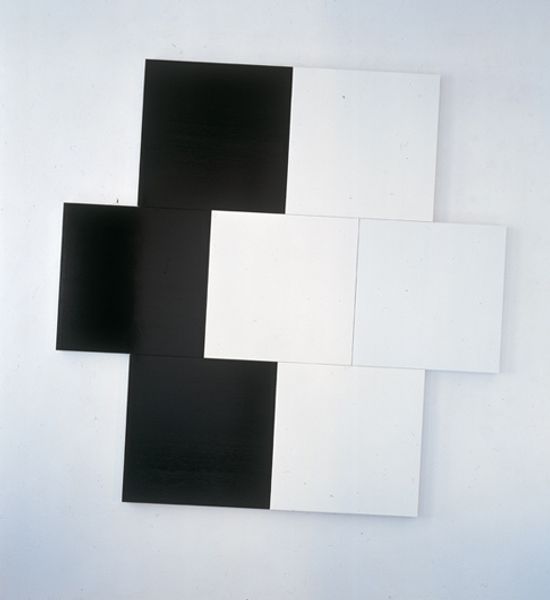
Copyright: Michael Heizer,Fair Use
Editor: This is Michael Heizer's "Untitled No. 8" from 1976, rendered in acrylic paint. It’s composed of very simple geometric shapes. It’s striking how such stark minimalism can feel so… assertive. How do you read this work? Curator: For me, "Untitled No. 8" operates within a lineage of artistic disruption. Looking at the hard-edge painting and its engagement with minimalism, how do we situate this work within broader discussions of power structures embedded within artistic spaces? Who was afforded the space and opportunity to make ‘minimal’ art, and who was excluded? Editor: That's interesting, I hadn't considered the social context. So, the geometric shapes and the lack of ornamentation… does that somehow tie into those power dynamics? Curator: It's about examining whose voice is amplified through abstraction. Abstraction, often lauded as universal, can obscure the particularities of experience, specifically experiences of marginalized communities. What does it mean to pursue stark minimalism in the face of social and political unrest? Editor: So, are you suggesting that even minimalist works aren’t apolitical? Curator: Absolutely not. The choice to remove explicit content is still a choice. Minimalism can be interpreted as a refusal to engage with pressing social issues, a kind of withdrawal from the realities experienced by many during that era. Editor: That gives me a lot to think about. It makes me question my initial understanding of minimalism as purely formal exploration. Curator: Exactly! And that’s the key to a critical approach.
Comments
No comments
Be the first to comment and join the conversation on the ultimate creative platform.
